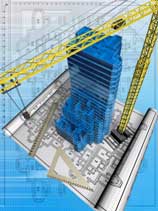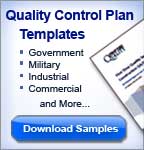 Every quality driven construction company needs a written QA/QC Framework. Your QA/QC Framework will act as your company standard for setting and establishing quality-related activities across all divisions and projects.
Every quality driven construction company needs a written QA/QC Framework. Your QA/QC Framework will act as your company standard for setting and establishing quality-related activities across all divisions and projects.
Even if you already have a written set of policies and procedures, your QA/QC framework will help put those details into perspective as part of a well thought out, integrated quality system.
An Executive Overview
An executive overview, your QA/QC Framework should be a simple two or three page document, easily understandable by customers, employees, and subcontractors, and one that describes what your company does to manage quality.
This powerful yet simple document only describes WHAT your company does to assure quality and not HOW your company does it. The HOW details should be included in your policies and procedures document.
6 QA/QC Framework Elements
I recommend that every construction company’s QA/QC Framework include at least six elements. The following are six elements you should include in your QA/QC Framework:
1. Quality Organization and Management
2. Documented Standards and Specifications
3. Formal Qualifications of Employees
4. Formal Qualifications of Subcontractors and Suppliers
5. Documented Field Inspections
6. Control and Prevention of Nonconformances
Each element should have a statement paragraph and several bullet points that define the company's standards. Here is a good example of a statement paragraph and bullet points for Framework element #5, Documented Field Inspections.
Example - Element #5: Documented Field Inspections
[Company Name] inspection processes ensure that all construction activities comply with the documented standards and specifications. We:
- Develop an inspection and test plan to identify required inspections and tests at key milestones during the construction, closeout, and warranty.
- Conduct a series of inspections for each construction task; before work begins, at first article completion, while work is in process, and at completion.
- Identify required checkpoints for critical quality and safety requirements for each construction task inspection.
- Use third party inspectors to verify conformance to critical quality and safety standards when a re-inspection cannot be repeated at job completion. The needs of the project dictate the frequency of third party inspections.
Each division or project typically has its own separate QA/QC manual that defines how the division or project carries out its quality-related activities. This allows for flexibility within divisions and projects, but provides consistency within the company.
In Conclusion
Think of your QA/QC framework as the backbone of your company’s quality program. Once you’ve developed the structure, you are then ready to build on the details. Preparing detailed QA/QC manuals for company divisions and Quality Plans for specific contracts becomes much easier.
The Framework is a tool for communicating your quality approach to customers and subcontractors outside your company as well as people inside the company. In most cases, the Framework will be useful for bid qualifications when owners ask for a brief description of your quality control methods.
About the Author - Ed Caldeira is founder of First Time Quality, LLC, specializing in submittal-ready construction QA/QC plan templates and custom quality plans as well as construction quality inspection and punchlist software.







